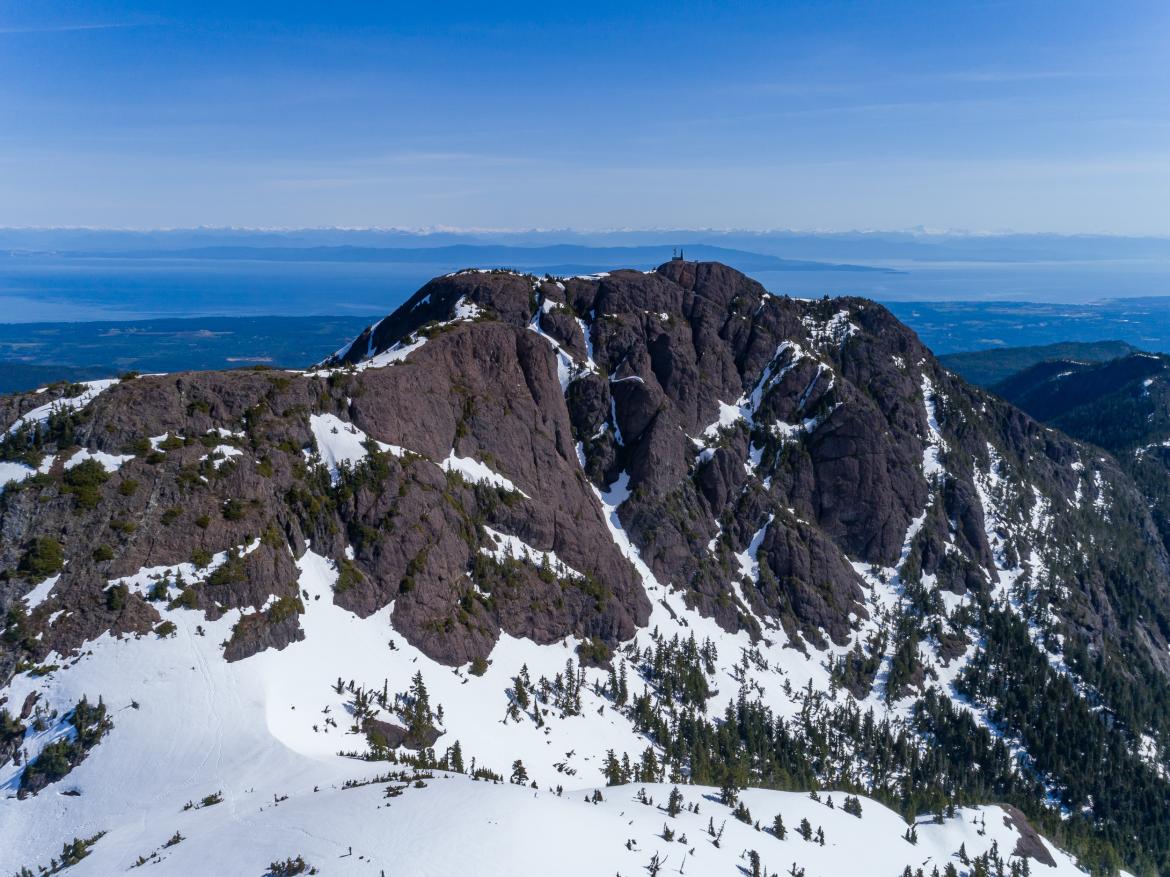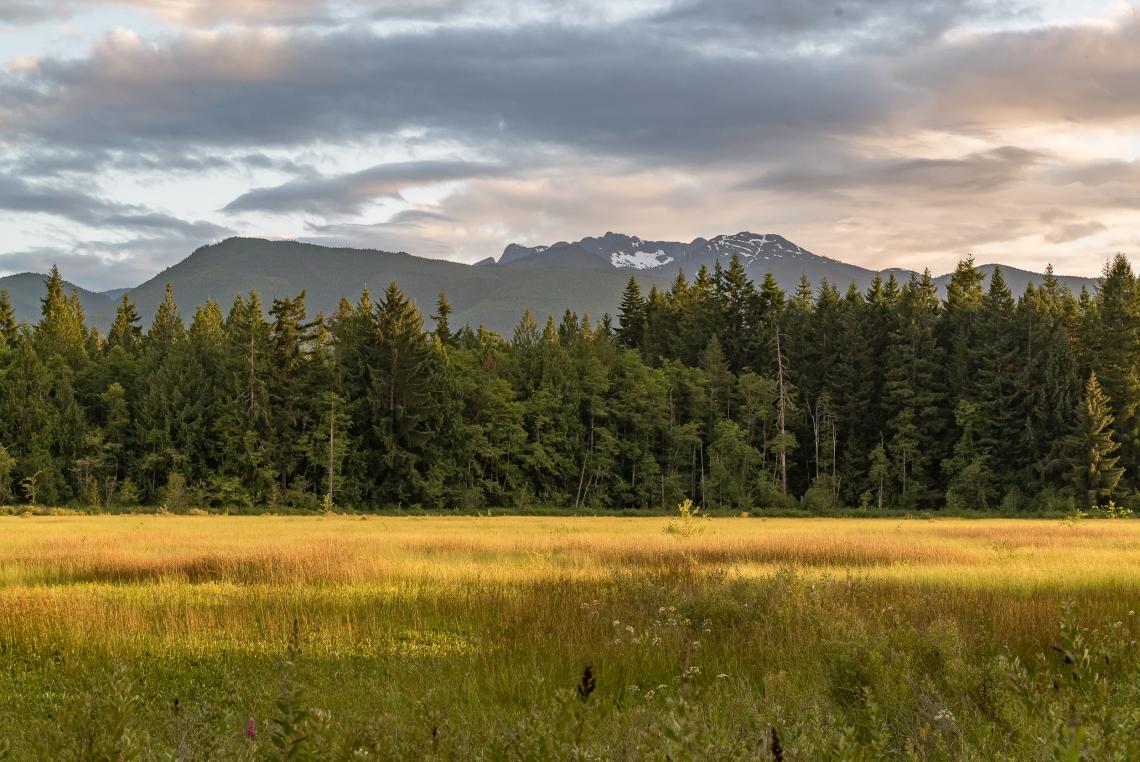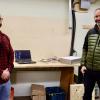
Study probes human/nature connections on Mount Arrowsmith, Vancouver Island. Photo Credit: Arrowsmith Media
July 22, 2019 - 2:45pm
VIU researchers launch far-reaching study on Mount Arrowsmith in collaboration with The Canadian Mountain Network.
A team of Vancouver Island University (VIU) researchers is ascending to new heights for an in-depth analysis that will project 100 years into the future to get a better understanding of what is happening in our mountain environments.
One-quarter of Canada’s land mass is made up of mountains, seven times the area of the European Alps. Most of those mountains are in British Columbia and as the population continues to grow, the mountain systems are facing unprecedented threats to their sustainability, which include climate change impacts, biodiversity loss and water scarcity – all relating to human impacts and our relationship to the natural environment.
The project will look at human/nature connections in mountain environments starting in the UNESCO-designated Mount Arrowsmith Biosphere Region (MABR).
Dr. Pam Shaw, Research Director of the Mount Arrowsmith Biosphere Region Research Institute (MABRRI); Dr. Lindsay McCunn, Psychology Professor; Dr. Sylvie Lafrenière, Sociology Professor; Geraldine Manson, Elder-in-Residence, Office of Aboriginal Education; and Graham Sakaki, MABRRI Research & Community Engagement Coordinator; have received $135,000 a year for the next three years from the Canadian Mountain Network (CMN) for their project ‘The View from 2117: Human Actions, Consequences, and Perspectives on Canada’s Mountain Regions.’
“Without a full understanding of human-caused impacts and a focus on solutions, efforts to conserve fragile mountain ecosystems are certain to fail,” adds Shaw.
Mount Arrowsmith is the largest mountain on southern Vancouver Island. A series of projects will be undertaken from the peak to the bottom of the Salish Sea – a vertical extent of 2,117 metres.
“We will then broaden the research to include other biosphere regions across Canada and other mountain regions with layers of jurisdictional complexity,” adds Sakaki.
The Canadian Mountain Network is headquartered at the University of Alberta and is one of a dozen Networks of Centres of Excellence of Canada (NCE).
This is the first time VIU has applied for and been accepted to participate in a Network of Centres of Excellence of Canada. The federal government program supports multi-disciplinary, collaborative research across Canada to solve critical issues and create new knowledge.
The funding will cover research over three years, including an ecosystem analysis of the region, a vital signs study for the Oceanside community, new governance and regulatory studies, and an examination of reasons why people are drawn to mountains.
“We want to try to understand the ways in which humans perceive nature and, in particular, mountainous environments,” says McCunn. “What is important to me is the opportunity to refine our knowledge about the psychological theory of sense of place: place attachment, place identity and place dependence for people who are exposed to these areas.”
A community profile being conducted by Lafrenière’s team will examine the different demographic pointers such as population, gender, age, education, income, labour force, participation in sports and leisure activities, homelessness, food security, volunteerism and a number of other indicators.

“We are creating a picture of what life is like in the Mount Arrowsmith Biosphere Region by compiling the characteristics of all the communities that are a part of it,” says Lafrenière. “It’s exciting because this has never been done before and because the boundaries of the region are natural ones, following the five watersheds of Mount Arrowsmith. Since they are not political or economic, it will take some work to collect the data that is relevant to the specific communities.”
The study will also review the multiple administration levels that preside over mountainous regions.
“If we look at Mount Arrowsmith, there are several jurisdictional authorities that have enacted regulations or policies that would impact people or places and ecosystems on the mountain,” says Shaw. “We feel there must be a better, uncomplicated way to govern place, one that is perhaps a ‘made on Vancouver Island’ way”.
The MABR boundary overlaps the territories of seven First Nations, four Biogeoclimactic Zones and three local governments, and contains a mix of ecosystems, including alpine meadows, old-growth forests, resource lands, industrial and commercial areas, and a wide range of residential densities.
The funding will also create research opportunities for up to 20 graduate and undergraduate students in each year of the three-year project.
“Ultimately, the combination of the findings from all the areas of research will contribute to a better understanding of the relationship we have with mountain landscapes, and ideally will lead to lessened or improved human/nature impacts along with improved policy and regulatory frameworks,” says Shaw.
Photo Caption: Study probes human/nature connections on Mount Arrowsmith. Photo Credit: Arrowsmith Media
-30-
MEDIA CONTACT:
Annette Lucas, Communications Officer, Vancouver Island University
O: 250.741.2020 | C: 250.618.7296 | E: Communications@viu.ca
Tags: Indigenous | MABBRI | Psychology | Research | Sociology | Research






